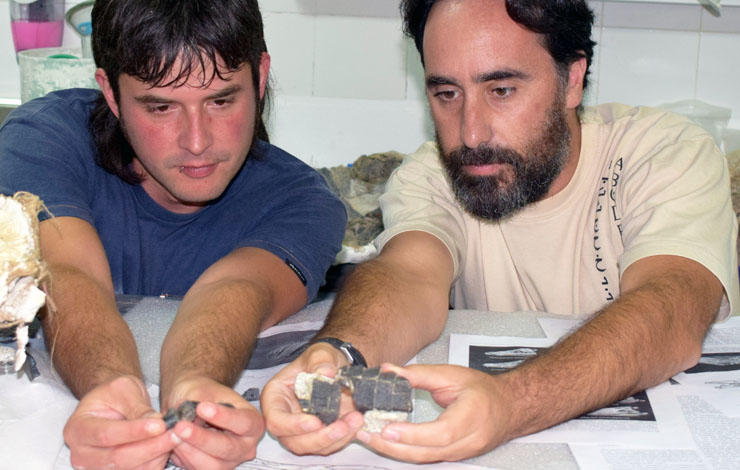04-11-2019

A small crocodile ancestor, 150 million years old, was discovered in the jurassic rocks of Lourinhã and its conservation quality helps to explain the evolution and origin of the bone armor that exists in the skin of these reptiles.
Paleontologists Eduardo Puértolas Pascual and Octávio Mateus of the NOVA School of Science and Technology and of the Lourinhã Museum have just announced a new Jurassic dwarf crocodilomorph fossil from Portugal. Such discovery was recently published in the prestigious international scientific journal Zoological Journal of the Linnean Society and is part of the scientific work on crocodylomorphs in Portugal, which Eduardo Puértolas has been conducting as part of postdoctoral research. Crocodylomorphs are the group of reptiles that gave rise to modern crocodiles and the fossil, affectionately dubbed "crocodile", consists in part of a skeleton in anatomical connection of a crocodilomorph, composed of osteoderms, vertebrae, ribs and some bones of the hind limbs. In life, the animal would be less than one meter.
The "crocodile" was recovered at Peralta Beach (Lourinhã, Portugal) in 1999 by Leandro Pereira, a resident of Lourinhã Municipality at that time. In 2014 and through the mediation of Ana Luz, her friend and volunteer at the Lourinhã Museum, Leandro donated the piece to the paleontological collection of the Lourinhã Museum.
The fossil is composed of several articulated bones, partially covered by rocky matrix. To facilitate its study, the specimen was taken to the laboratories of the National Center for Research on Human Evolution (CENIEH, Burgos, Spain), where it was submitted to a Computed Tomography (micro CT). This technology has been widely used in paleontology for several years and allows X-ray images of sections of the object. The images obtained made it possible to create 3D models, which allows observation of the external and internal morphologies.
Thanks to this technique, it was possible to study all bones, including non-visible parts, and compare them with other crocodilomorphs of the time. The presence of amphelic vertebrae, typical of most primitive crocodilomorphs, the peculiar morphology of their dermal armor (formed by two rows of dorsal osteoderms that articulate through a lateral spine), and the presence of polygonal ventral osteoderms most likely indicate the "crocodile" is a member of the family already known in the Jurassic, the Goniopholididae but it has not been possible to determine to which particular genus or species the fossil belonged or if it corresponds to a new species.
This type of crocodilomorphs can reach sizes up to five meters in length, however, it was estimated that the “Crocodile” measured less than one meter in length, hence its nickname. But does the small size of this specimen mean that it was a juvenile or a strangely small species? It is a question for now unanswered. To obtain it, it is necessary to determine the age of the individual and this is a work in progress.